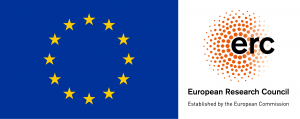#SemioPills 2: Jörg Rüpke
Jörg Rüpke is a leading figure in the field of comparative religion and classical philology, and a renowned expert in Roman religion. He is full professor and deputy director of the Max Weber Kolleg at the University of Erfurt (Germany). A number of books he authored and edited were published in prestigious series for Polity, Wiley/Blackwell, and Oxford University Press, among others. In 2018, he issued Pantheon (Princeton University Press; also available in Italian, Einaudi), his most comprehensive and up-to-date monograph about Roman religion, which presents insightful reflections about religious communication.
These are the questions we asked Prof. Rüpke:
- In your latest book, Pantheon (Princeton University Press, 2018), you define religion first and foremost as a form of communication. Could you please tell us more about this strong statement?
- Could you explain us the role of communication and the evolution of media in shaping religions?
- What is your method in studying the agencies involved in both religious communication and narrations?
- What can the study of the ancient Roman religion teach us about today’s religions?
- What is your idea about the semiotic approach to religion and how can a semiotic method contribute to the comparative study of religions?
You can find his answers in the following video.

